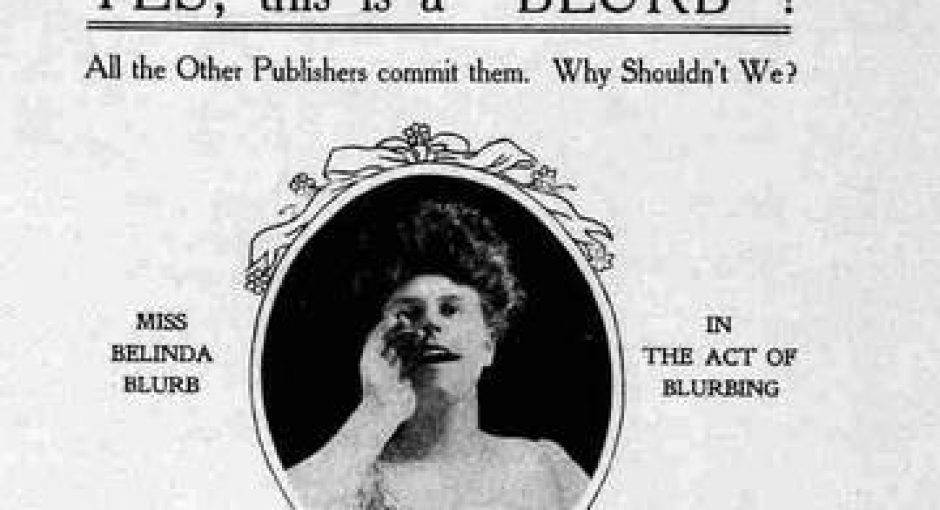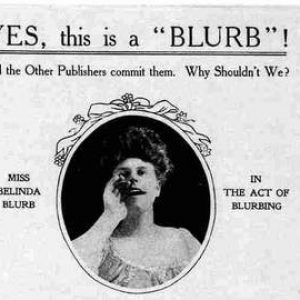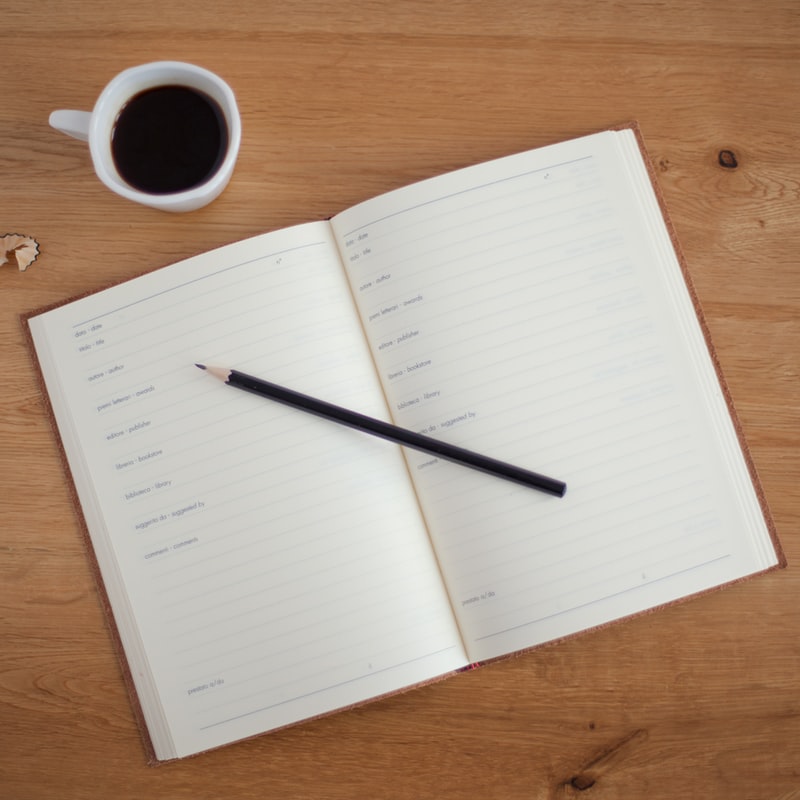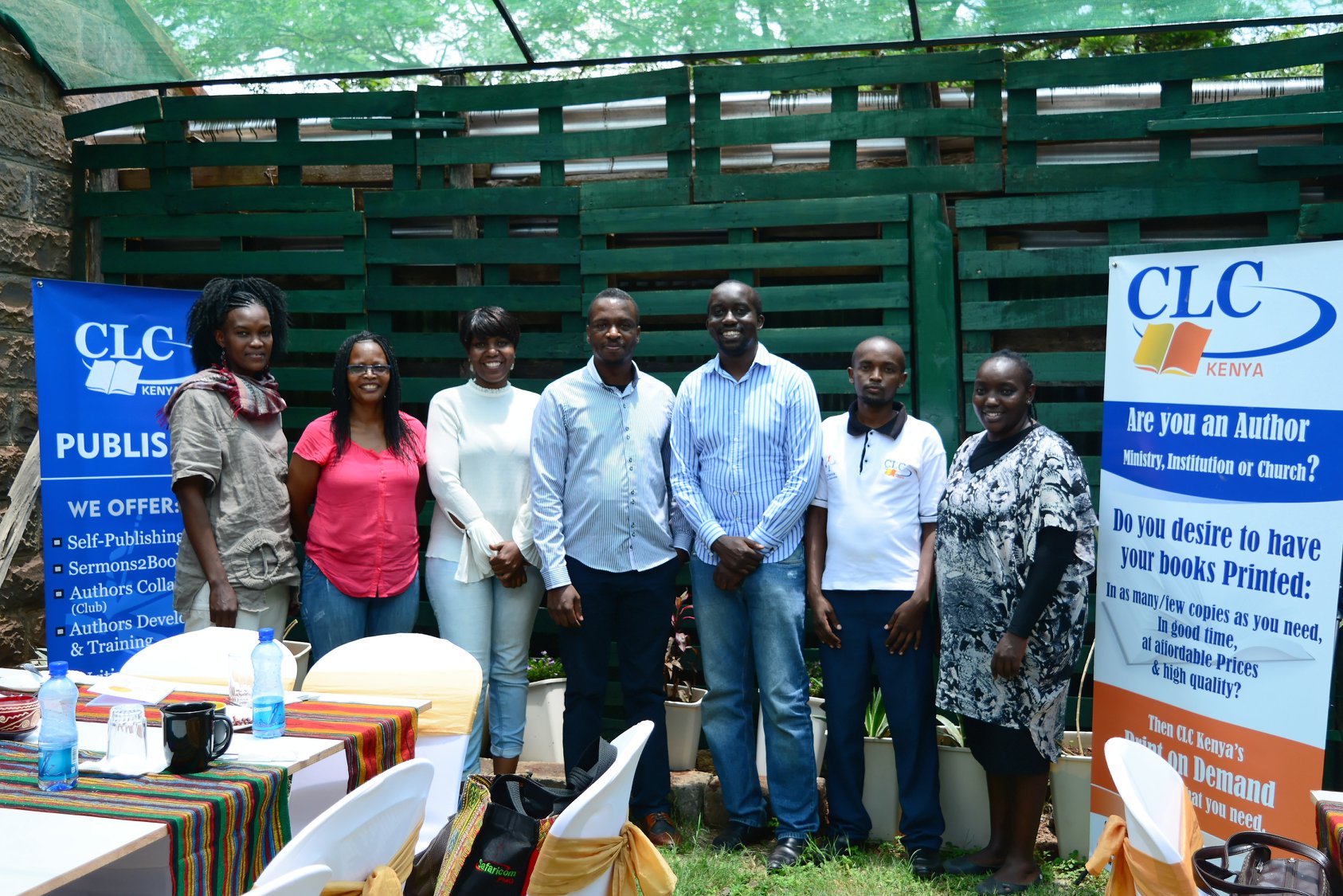According to merriam-webster, the word blurb was coined by American humorist Gelett Burgess, as attested by American scholar Brander Matthews in September 24, 1922, New York Times article about blurbs: “Now and again in these columns,” he writes, “I have had occasion to employ the word ‘blurb,’ a colourful and illuminating neologism which we owe to the verbal inventiveness of Mr. Gelett Burgess.”
The time was 1907, and the place was an annual dinner of the American Booksellers’ Association, at which Burgess was one of the honoured guests. It was a custom at these dinners for the guest authors to present to the assembled company souvenir copies of their latest books. Being the comedian that he was, Burgess prepared a mock jacket of his latest book Are You A Bromide? featuring a doctored picture of a woman that he had lifted from a dental advertisement. The woman was dubbed “Miss Belinda Blurb,” and she was shown in the picture as calling out a “blurb,” indicated by the caption “Miss Belinda Blurb in the act of blurbing.” The self-congratulatory text also adorned the jacket.
What is a Book Blurb?
A blurb is a short yet descriptive account of the book that goes on the back cover or within the book sleeve of a hardcover book. It includes any information that represents the book best and intrigues the readers and shoppers to pick the book off the shelves.
For ebooks and digital platforms, the description is posted on a book’s purchasing page, along with the book cover and price. The book blurb’s main purpose is to entice readers in and captivate them enough to buy the book.
The blurb is also often referred to as a synopsis or simply book description.
Stay within the guidelines of your genre
The content and style of blurbs vary depending on the type of book you’re describing. Using techniques that are typical of one category for another category, will only confuse your readers.
For instance, bullet points work well in motivational-inspirational or self-help book descriptions but will not work well for novels.
Likewise, the intrigue and suspense and hints at plot twists used in fiction book blurbs will not work well for self-help books which should demonstrate that your book holds the solutions to your readers’ problems.
Children’s book descriptions, poetry book descriptions and academic book descriptions are also a very different and specialized genres from the two above. .
The best way to get a clear idea of your genre’s best practices is to run a quick book descriptions search within your genre to see what others have done. Amazon is a good place to start and be sure to take note of the popularity of the books as you search.
Touch on your readers’ pain points
As a writer, your job is to figure out what challenges your readers are experiencing and how your book’s content will help alleviate those challenges. You need to then highlight how your book will fulfil the readers’ needs.
Research shows that what drives buyers to buy is ultimately emotions. People read self-help books seeking help on how to get past problems in their lives. Your job will be to show them that you know how to get them out of these problems. Ensure you make them feel that you understand where they are, and give them hope that things will get better.
Since most readers have an idea of the book they’re looking to read next, a well-crafted blurb won’t try to sell everybody on the book — it will only try to help people who already want a book like yours see that it’s for them.
Use keywords correctly
Keywords are ideas and topics that define what your content is about. In terms of Search Engine Optimization, they’re the words and phrases that searchers enter into search engines, also called “search queries.”
As a digital content creator, you want the keywords on your page to be relevant to what people are searching for so they have a better chance of finding your content among the results.
Caution: Do not over keyword your book blurb. Online app algorithm is mysterious and ever-evolving, so it’s impossible to know exactly what level of keyword use is acceptable. As a rule of thumb, you want to stay on Amazon’s good side — and not alienate actual humans who end up reading your blurb. So long as your title and product description all remain relevant and natural to read, you should be in the clear.
Start with a hook
Just as you did with your book introduction, start your blurb with something dramatic, or something that establishes your expertise. You want to pick your book description words to make people want to read the rest of the blurb.
Entice your readers
The blurb is not meant to be a summary of the book. That can be both boring and a spoiler. Remember that the main purpose of the blurb is to highlight the reasons why your readers should be reading your book right now rather than all that they can find inside the book.
The balancing trick comes in because you want to tell readers enough about your plot for fiction, or lessons for nonfiction, such that they’ll want to know more. But don’t give up your secrets and all the fun stuff.
Rather than tell them what’s inside your book in details that deem the book useless in the end, you can allude to all the possible gems they can find in the book that will make it hard for them to resist buying your book. Teasing your readers is your keys here.
How long should it be?
Keep your blurb short and punchy is important. You should describe your book in simple, straightforward, and consumer-friendly terms. This description should be at least 150-200 words long.
This should be sufficient to give your readers enough information to understand what your book is, what it’s about, and if they’ll like it—key factors in deciding whether to buy it or not.
For self-help books, aim for 150-250 words in one paragraph and a few bulleted points highlighting the key points in the book.
Keep it fresh
As witty as some expressions and idioms may seem, a lot of them are overused and the only response they elicit is an eye roll. Try to steer away from the ones that are worn out, if you want a blurb that stays fresh for years or at least a few months.
It’s an industry standard to use the third person when writing a blurb. This rule goes for all genres, travel memoirs, success story, or even a full autobiography.
Once you’ve given it your best shot, relax and your editor will help streamline it for you.
CLC Kenya
Subscribe to join me, let's journey together...






